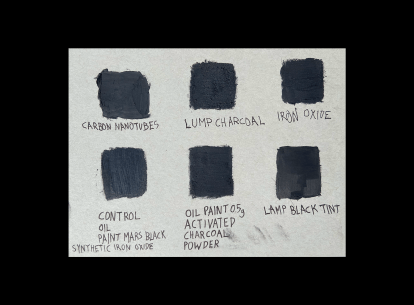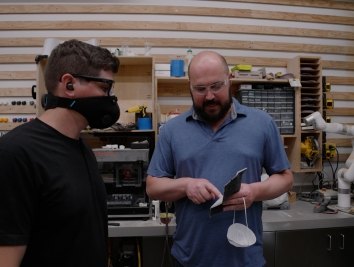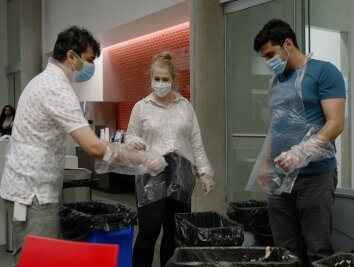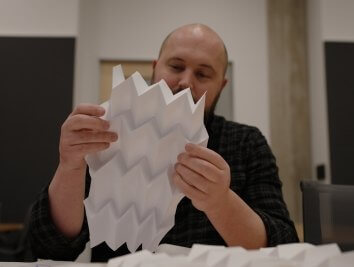Corgan Create: Black and White

When Corgan Create kicked off in 2014, it was a natural extension of the firm’s spirit of agility and innovation. Supporting the curiosity of individuals who want to explore emerging technologies, design methodologies, or any “big idea” they are passionate about has led to an array of projects with real design applications. That even off-duty Corgan employees favor human-centric, user-experience focused projects isn’t surprising, but it is rewarding to see the genuine passion for Corgan’s ethos beyond the job description.
As in years past, the 2023 finalists showcased their innovation, determination, and imagination during the first Create event since the pandemic. Here is one of the three finalists:
Corgan Black and White
Corgan Black and White, the partnership of Mark Cunningham and Thomas Lusk based in Corgan’s Phoenix studio, looked to make ultra white and ultra black paints more accessible for use in buildings or other large-scale projects. They were inspired by the work of Purdue researcher Xiulin Ruan, who created a white pigment so reflective it can replace air-conditioning, and artists Anish Kapoor and Stuart Semple, who both created pigments so black they make any surface essentially disappear. These pigments are expensive and hard to get in the quantities that an architect or designer would need, so the team examined their microscopic structures to see what paint additives could create similar structures. For the white paint, they used calcium carbonate (instead of the more expensive barium sulfate) to create a sphere packing structure with a high surface area and high reflection of light. For the black paint, they found that activated charcoal’s porous structure created a similar effect to that of the nanotubes generally used in ultra-black paints much more cost-effectively. When tested, both paints provided a significant temperature range difference when compared to standard black and white paints, demonstrating their potential applications for mechanical cooling and light absorption.
Q&A
What was the spark? What made you think “I should see what would happen if…”?
Initially, we saw the research being done at Purdue University and tried contacting them to collaborate. We also reached out to major coatings manufacturers to try and find a research partner and were told that they were not interested. I hate being told no, something isn’t possible without a good reason, so Mark and I decided to go it alone and write the Create proposal to continue to study this on our own.
How did you simplify your “big idea” into a doable project? Were there any difficulties?
We watched a lot of YouTube videos and intentionally approached the project from a DIY perspective using paints and materials that were readily available to the public. The goal was a low-cost, low-tech solution.
What is/was the vision, ideally?
Super white and black coatings that will extend the visual range of paint beyond the current limitations of commercially available black and white paint today. The vision ideally is the super white coating is so white/reflective it provides mechanical cooling and replaces and/or reduces your air conditioning.
What is the next step, practically?
Continued testing with more types of materials. We’re reaching out to additional manufacturers to try and find a partner to make these coatings commercially available. We’re planning to meet with David Hondula, the director of the Office of Heat Response and Mitigation for the City of Phoenix and see if they could utilize our research as part of the city’s cool pavement coating program.
How will you know when the project is successful?
We’ve already achieved a significant temperature range difference between Corgan Black and White! We haven’t been able to test Corgan black and white in the heat of the Phoenix summer yet but did see a range of over 11 degrees Fahrenheit last fall. We are continuing to reach out to major paint manufacturers with our results to help generate more R&D interest in this topic. We also plan to engage the city of Phoenix chief heat officer and have a discussion regarding their cool street coating program and if they would have an opportunity to incorporate our research into their work.








